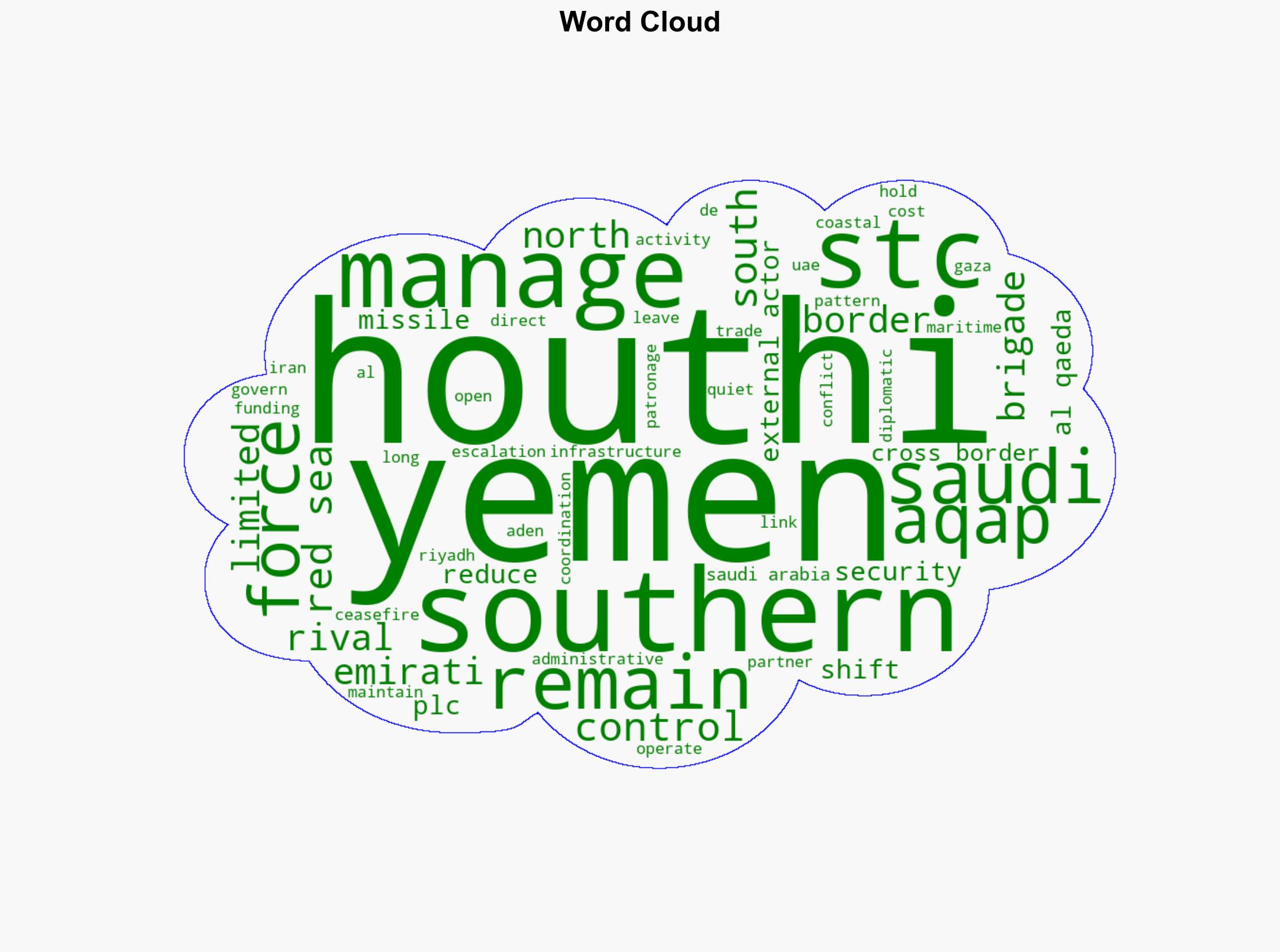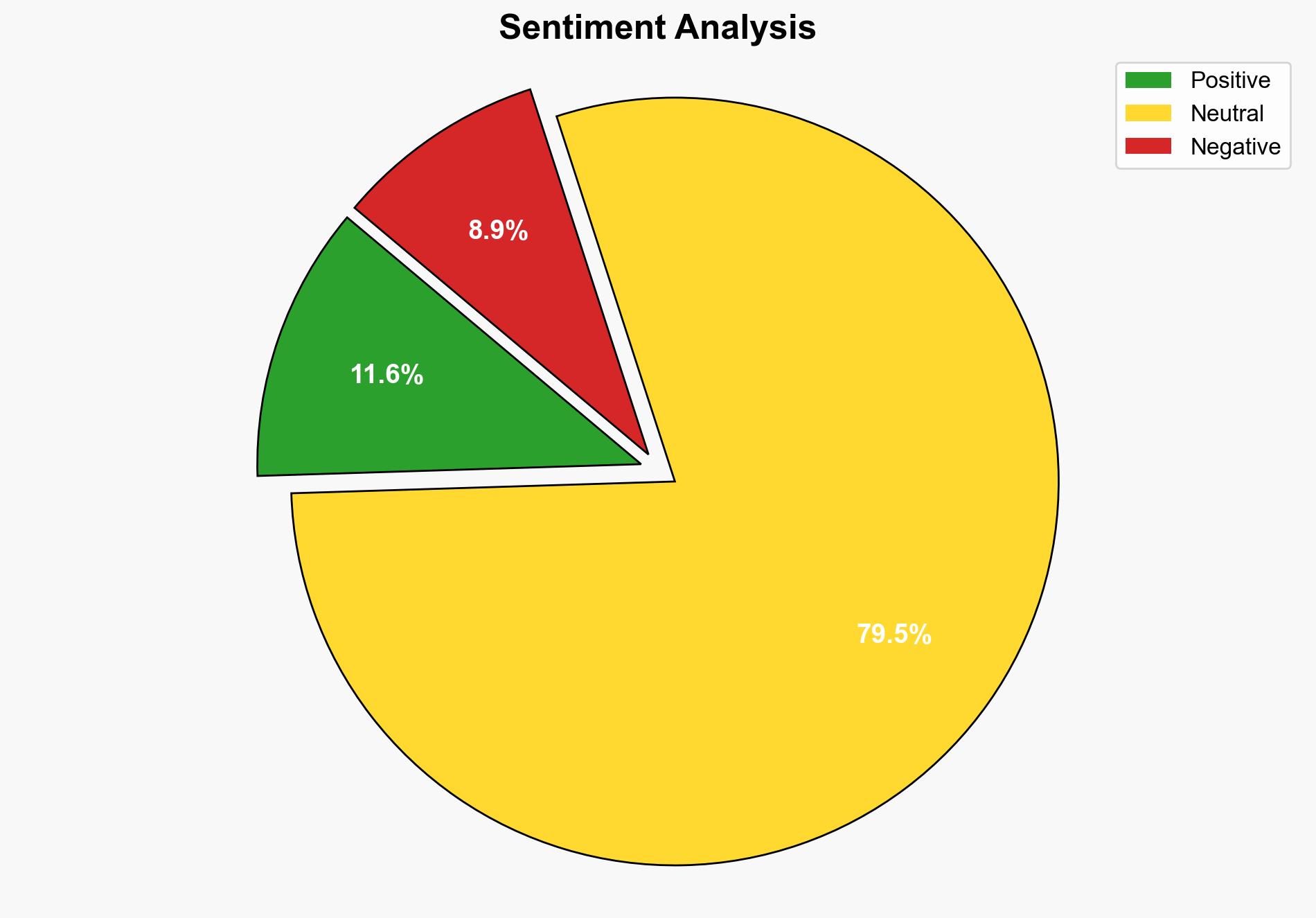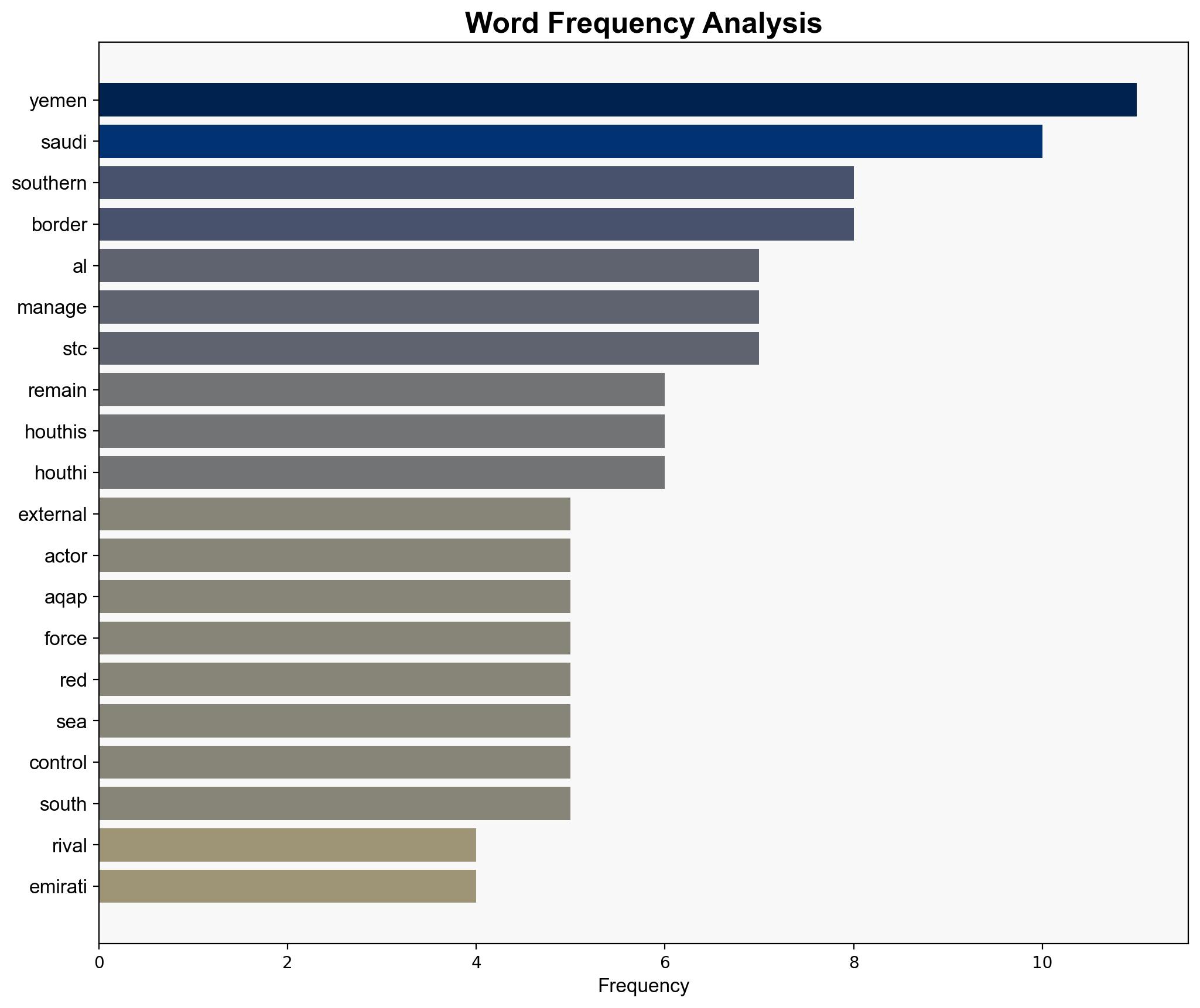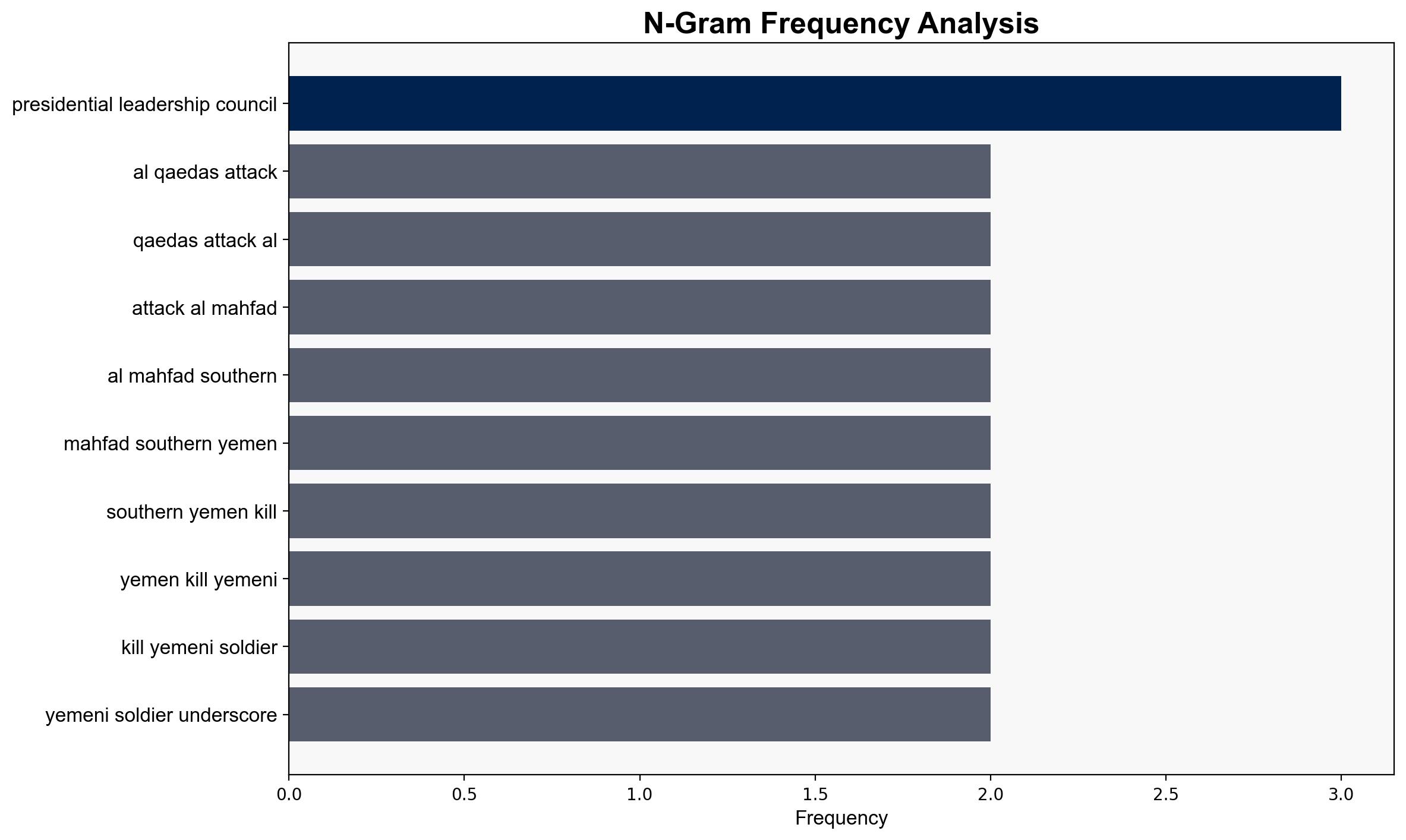How the Gaza Ceasefire Is Reshaping Yemen – OilPrice.com
Published on: 2025-10-24
Intelligence Report: How the Gaza Ceasefire Is Reshaping Yemen – OilPrice.com
1. BLUF (Bottom Line Up Front)
The current geopolitical dynamics in Yemen, influenced by the Gaza ceasefire, suggest a complex interplay of regional actors seeking to maintain influence through proxy forces. The most supported hypothesis indicates that the ceasefire has led to a strategic shift, with external actors focusing on containment and stability rather than direct intervention. Confidence Level: Moderate. Recommended Action: Enhance diplomatic engagement with regional stakeholders to stabilize the situation and prevent further fragmentation.
2. Competing Hypotheses
Hypothesis 1: The Gaza ceasefire has allowed regional actors to shift focus towards stabilizing Yemen through indirect means, reducing direct military engagement and promoting diplomatic solutions.
Hypothesis 2: The ceasefire has inadvertently increased instability in Yemen by allowing non-state actors like AQAP to exploit gaps left by regional powers refocusing their efforts elsewhere.
3. Key Assumptions and Red Flags
Assumptions:
– Regional actors prioritize stability and containment over territorial control.
– AQAP and other non-state actors are opportunistic and will exploit any power vacuums.
Red Flags:
– Minimal coordination among regional blocs could lead to unintended escalations.
– Lack of reliable data on the internal dynamics of non-state actors.
4. Implications and Strategic Risks
The de facto partition of Yemen into autonomous zones could harden, leading to prolonged instability. Economic disruptions, particularly in maritime trade routes, could arise if AQAP or other groups target strategic ports. Geopolitical tensions may escalate if external actors fail to manage their proxies effectively, potentially drawing in more international involvement.
5. Recommendations and Outlook
- Engage in multilateral diplomacy to encourage regional actors to coordinate efforts in Yemen.
- Enhance intelligence sharing on non-state actor movements to preempt potential threats.
- Scenario Projections:
- Best Case: Successful diplomatic efforts lead to a unified approach to stabilize Yemen.
- Worst Case: Increased fragmentation and escalation of violence due to uncoordinated actions.
- Most Likely: Continued low-level conflict with sporadic escalations.
6. Key Individuals and Entities
– AQAP (Al Qaeda in the Arabian Peninsula)
– STC (Southern Transitional Council)
– Tareq Saleh
– Emirati-backed forces
– Saudi Arabia
7. Thematic Tags
national security threats, cybersecurity, counter-terrorism, regional focus





